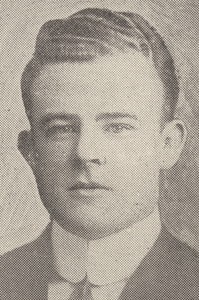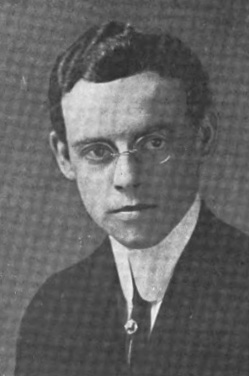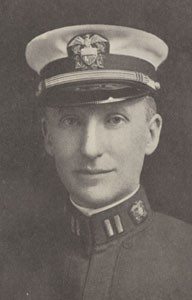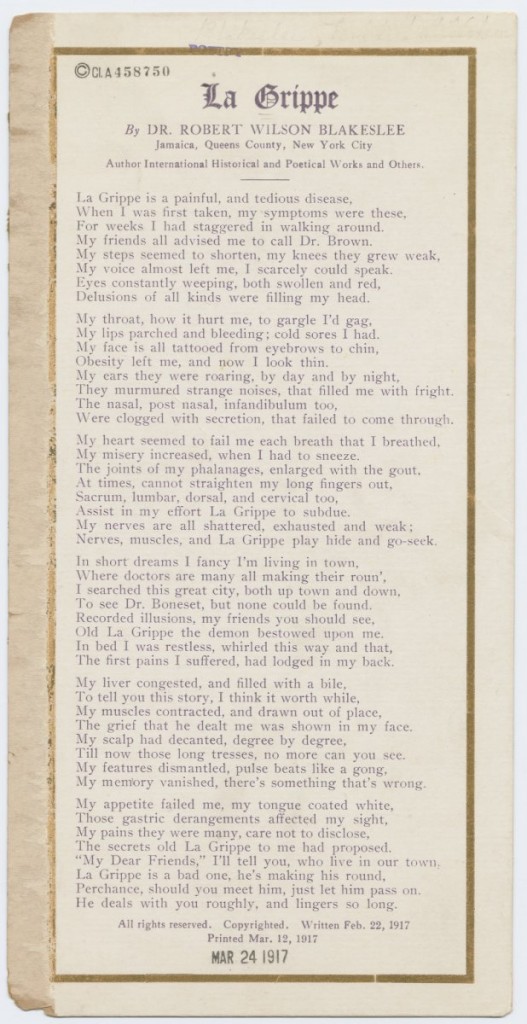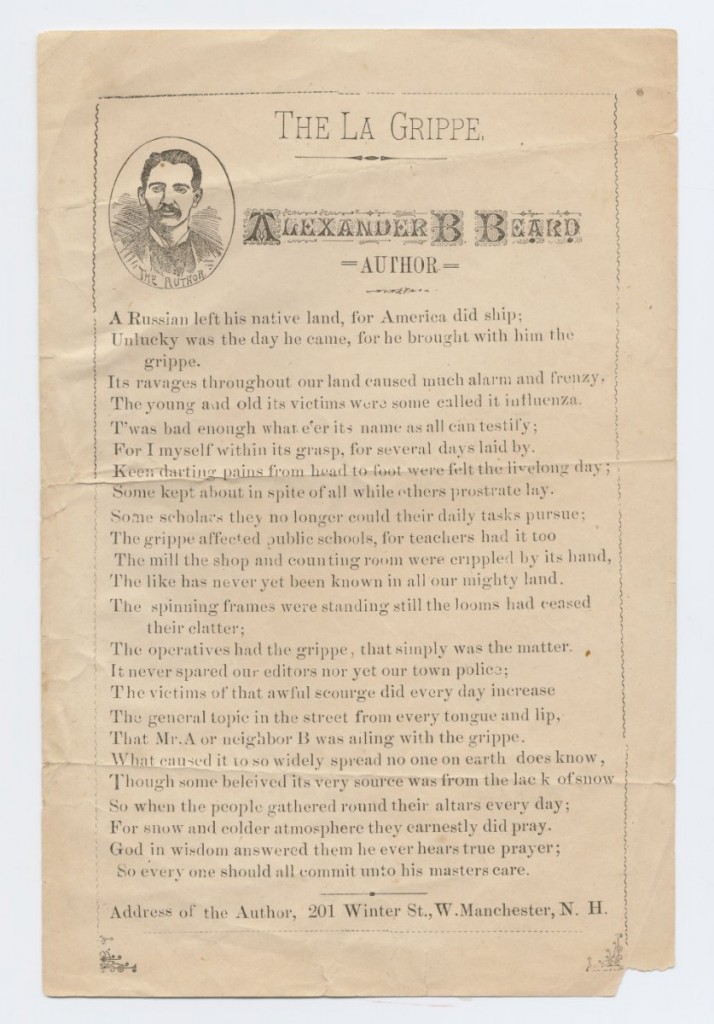“THE WORK OF THE LIBRARY WAS CRIPPLED BY THE INFLUENZA, WITH ONLY A FEW OF THE STAFF ESCAPING.”
–Harry Lyman Koopman, 1919[1. BUA. Annual Report of the President to the Corporation of Brown University. Providence, RI. 1919. pg50]
Rampant spread of disease was among the many devastating aspects of the war. The Influenza Pandemic of 1918 killed millions worldwide, far more than the war itself. The outbreak was particularly horrifying in that it attacked the youngest and healthiest of the population. It is thought that the virus first emerged in the United States, in Kansas during the spring, and quickly took hold at a military camp in the state, Camp Funston at Fort Riley.

In several waves, the epidemic spread to other U.S. military camps. In August, Camp Devens in Massachusetts was hit especially hard. In Providence, the first local cases were reported in September, across the river from the Brown University campus at a naval facility called the Rumford Rifle Range. Cases were also reported at the Naval Training Station in Newport, where John Stanley Hardman (1920) U.S.N.R.F., was stationed as a First Medical Assistant. After nursing two men suffering from influenza, Hardman also fell ill with the disease. Thirty-six hours later he was dead. Hardman’s fiancee was at his bedside; the couple had planned to marry on October 1st. At the time of his death, his parents were traveling east to attend the wedding.[3. http://www.flu.gov/pandemic/history/1918/your_state/northeast/rhodeisland/]
On September 25th, Brown University officials received a telegram from Washington, advising to exercise of great care as to the health of the men, and to permit them to wear their own warm clothing as a safeguard from illness.[4. BUA. OF -1E-3 box 1. Biology, Hygiene, and Sanitation]

On October 5th, Brown put a strict quarantine in place “to keep students away from crowded halls and cars in the city, and to keep infected persons from entering the campus.”[5. BUA. BAM, 19:14. November, 1918. p80] Effective after reveille on Tuesday morning of October 6th, no student was allowed to leave the campus at any time. Civilians were allowed on campus only if they agreed to be quarantined in buildings approved by the University (the union and shuttered fraternities) and take their meals in the mess hall. Members of the faculty and all employees were required to report to University physicians immediately on the appearance of any symptoms of influenza. Students with known exposure to the disease, likewise had to immediately report to a University physician. Students from the Women’s College, without exception, were required to meet in separate classes. Chapel services were discontinued. The Army and Navy units were restricted to the dormitories and armed guards were stationed at the gates of the campus.[6. BUA. Topic Files 1-E WWI. n.d. Quarantine]
“The campus is now Campus Martius ac Neptunius – most of the gates closed and the rest guarded by a khaki-clad soldier with a rifle on his shoulder. Even the platform before the door to the John Hay Library is guarded from 7:15 am to 9:15 pm. No one may enter or leave the building without a pass, and this applies to the President, the Faculty and the members of the library staff as strictly as to the rawest recruit.”[7. BUA. BAM,19:4. November, 1918. p69] Providence’s public and private schools, theaters, movie houses, and dance halls also closed on October 6th. Rhode Island’s early cases of influenza, including all the cases from the rifle range, had been admitted to Providence hospitals. City residents had started falling ill and scores were dying.[8. http://www.flu.gov/pandemic/history/1918/your_state/northeast/rhodeisland/] On campus, cases of influenza were reported daily. Army and Navy Physicians, Dr. Sellew and Dr. Brown, cared for those who contracted the disease. At the Women’s College, “Miss Paddock and Miss Whitman took care of the sick until nurses could be obtained.”[9. BUA. Sepiad. December, 1918. pg25] Eight students were removed from campus and taken to the hospital. President Faunce noted that “The shutting of 600 students into a small campus for four weeks is not conducive to effective study. Quarantine is hard on the boys.”[10. Annual Report of the President to the Corporation of Brown University. Providence, RI. 1919. pg10] Reports of deaths of Brown servicemen from influenza and pneumonia came to the University.
By the end of October, cases of influenza in the city began to subside. Providence’s schools re-opened on Monday, October 28th. Brown’s quarantine was lifted the following Monday, November 4th. The University reported that it came through with relatively few cases of illness and no deaths. The campus quarantine was mainly viewed as an inconvenience, but the epidemic wasn’t over.In early December, Providence’s physicians began to notice a resurgence of influenza. [9. http://www.influenzaarchive.org/cities/city-providence.html] On campus, George Lyman Stratton, 1922, a member of the Brown Naval Training Unit, contracted the disease and was taken to St. Joseph’s Hospital, where he died from pneumonia on December 6th. By December 8th, 26 men from the Naval Unit and the S.A.T.C. had influenza. This time, Brown went under an unofficial quarantine, asking students to voluntarily stay on campus. In addition to the death of Stratton, Women’s College President, Lydia Shaw King reported to President Faunce, that the influenza attacks “carried off two of our students.”[11. Annual Report of the President to the Corporation of Brown University. Providence, RI. 1919]
By the time 1918 came to a close, 941 of Providence’s residents were dead from the virus. Of the 42 men listed on Brown’s Honor Roll, 22 lost their lives to illness, namely influenza-pneumonia. Some died in training camps, some died aboard their transport ships, and some survived the front lines only to succumb to the flu in a hospital in France. Several Providence natives were among the Brown servicemen that lost their lives to influenza.
Robert Emmet McGough (non 1910) attended Classical High School before he entered Brown. McGough was part of the “crack” regiment of Marine Corp sharpshooters, known as “The Black Cats.” McGough’s regiment left Quantico Training Camp for France in September of 1918. Aboard the ship, 100 servicemen became ill and died, including McGough who succumbed to pneumonia which followed the influenza.
Frederick Eames Cooper (1913) attended Classical High School before entering Brown. In a letter to Biology Professor H.E. Walters dated March 13th, 1918, Cooper described how his eyes failed to get him into aviation; the circumstances of his commission in the Ordnance Office Reserve Corps.; and his transition from civilian life to military life. “I lost out by about five minutes a chance to go to France and I have never quite forgiven myself.” Cooper detailed his duties at the arsenal as Mess Officer in the machine shop and forging plant. Cooper closed the letter by mentioning that he had been raised to rank of Captain on January 8th, 1918. Cooper died from influenza at the Watertown Arsenal on September 24th, 1918.
Irving Thayer Boardman (1914) Private, 9th Company, 3rd Battalion, 152nd Depot Brigade, Camp Upton, N.Y., attended Classical High School. At Brown, Boardman was a member of Sigma Phi Epsilon. He was a graduate student at Clark University when he was drafted into service. Boardman died of influenza on September 27th, 1918.
Dr. William Henry Buffam (1898) was on staff at Providence’s Lying-In Hospital before the war. When an influenza epidemic broke out on his crowded transport ship to Liverpool, Dr. Buffam worked to contain it. Buffam arrived showing early signs of the disease. Two days later, he developed pneumonia, and died after several hours at the Great Western Army Navy Hospital on October 13th, 1918.
Related Materials in the BDR:
Places mentioned in this story:
Rumford, Rhode Island; Newport, Rhode Island; Providence, Rhode Island; Manhattan, New York; Fort Riley, Kansas; Washington, D.C.; Allentown, Pennsylvania; Quantico, Virginia; Yaphank, New York; Liverpool, England




